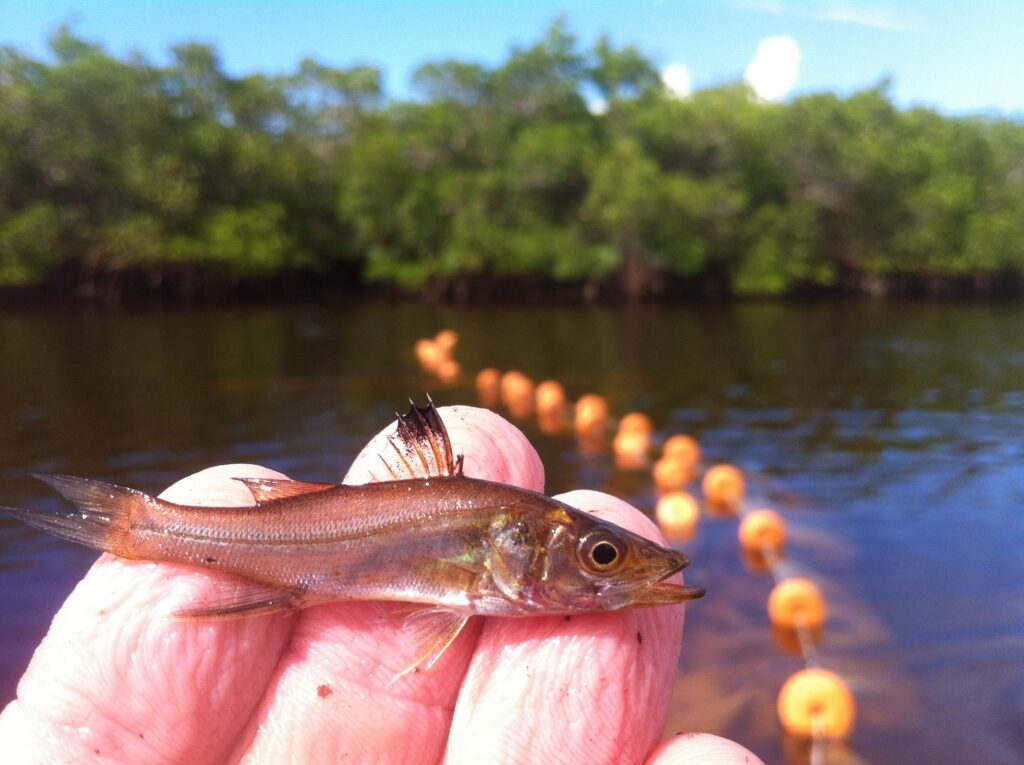Record Juvenile Snook Release by Mote Marine Laboratory: A Step Towards Ecological Restoration
Mote Marine Laboratory has made headlines with its recent initiative to release an unprecedented number of juvenile snook into the waters of Sarasota County. This ambitious project is designed to bolster fish populations and rejuvenate coastal ecosystems that have faced significant challenges due to environmental shifts and fishing activities. The release, which involved thousands of young snook, represents a pivotal moment in ongoing conservation efforts and underscores Mote’s dedication to sustainable fisheries management. Both local fishermen and environmental advocates are optimistic about the potential benefits for the economy as well as the ecological integrity of the region’s aquatic environments.
Mote Marine’s Juvenile Snook Release: Enhancing Ecosystem Health
The recent introduction of a record number of juvenile snook into Sarasota County signifies a major advancement in improving the marine ecosystem in this area. Organized by Mote Marine Laboratory, this initiative involved relocating thousands of juvenile snook—an essential species for local fisheries and biodiversity—into critical habitats. By facilitating this introduction, Mote aims to aid natural population recovery while promoting a healthier aquatic environment. Community members along with local ecologists have united behind this vital effort, acknowledging its importance in restoring fish populations within these crucial waterways.
This landmark release not only demonstrates a commitment to ecological sustainability but also showcases collaboration among local organizations and residents. Key components of this initiative included:
- In-depth Research: Conducting studies to determine optimal locations for releasing snook.
- Community Involvement: Engaging local volunteers during the release process to foster awareness.
- Ongoing Monitoring: Implementing follow-up assessments aimed at tracking survival rates among released snook.
Mote has also integrated educational initiatives aimed at informing the public about the significance of snook populations and effective fisheries management practices. This collaborative project highlights not just ecological advantages but also emphasizes community involvement as key in nurturing sustainable fishing practices locally.
Expert Analysis on Snook Restoration Significance in Sarasota County
The recent endeavor by Mote Marine Laboratory to introduce an exceptional number of juvenile snook into Sarasota County’s waters marks an important stride towards maintaining regional marine health. Local experts stress that such restoration initiatives are crucial for several reasons:
- Ecosystem Stability: Snooks play an integral role in sustaining coastal habitat health by regulating smaller fish and invertebrate populations.
- Economic Benefits: The recreational fishing industry centered around snooks is vital for Sarasota’s economy; robust fish stocks enhance tourism opportunities while fostering community engagement through outdoor activities.
- Coping with Climate Change: Revitalizing juvenile snook numbers strengthens coastal ecosystems’ resilience against climate impacts, aiding habitat recovery efforts amidst changing conditions.
Experts caution that successful restoration will necessitate continuous management strategies alongside protective measures for habitats. Recommended approaches include enhancing spawning grounds, monitoring population dynamics closely, and raising public awareness regarding sustainable fishing methods through various outreach programs.
| Tactic | Aim |
|---|---|
| Ecosystem Rehabilitation | Create better spawning areas conducive for young snooks’ growth. |
Strategies for Community Engagement in Fisheries Conservation Efforts
The active participation from community members is essential for successful fisheries conservation endeavors. Involving locals generates support while promoting sustainable practices that safeguard aquatic ecosystems effectively. To boost community engagement further, organizations can adopt these strategies:
- Volunteer Initiatives: Create opportunities where residents can engage directly with habitat restoration projects like planting native flora along shorelines.
- Educational Workshops: Conduct workshops emphasizing responsible fishing techniques alongside species conservation knowledge.
- Stakeholder Meetings: Host regular gatherings allowing community voices on concerns or ideas related directly towards conservation planning.
Apart from direct involvement strategies mentioned above , effective outreach campaigns can strengthen connections between communities & their surrounding marine life . Utilizing social media platforms & collaborating schools could raise awareness significantly regarding ongoing conservation projects : p >
| < b >Outreach Methodology< / b > th > | < b>Description< / b > th > |
|---|---|
| < b >Social Media Outreach< / b > td > | < p style = "margin :0;" >Leverage platforms sharing success stories , updates on released juveniles , tips promoting sustainability.< / p > td > |
| < b >School Collaborations< / b > td > | < p style = "margin :0;" >Partner up schools organizing field trips focusing hands-on learning experiences at fishing sites.< / p > td > |
Looking Ahead: Future Prospects
The remarkable release event involving numerous juvenile snooks in Sarasota County signifies an important milestone within regional conservation efforts led by Mote Marine Laboratory . This undertaking seeks not only enhance existing fish stocks but also improve overall health across diverse marine ecosystems present here . As stakeholders continue monitoring progress made concerning these young fishes , collaborative actions taken between research institutions & communities highlight necessity implementing sustainable practices preserving Florida’s rich aquatic heritage moving forward . With optimism surrounding thriving juveniles contributing vibrant culture around recreational angling alongside resilient environments benefiting generations yet unborn .
